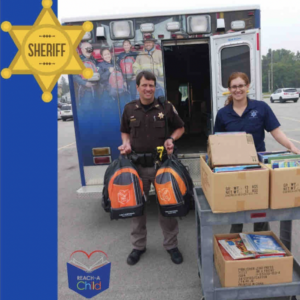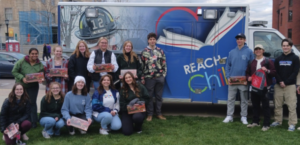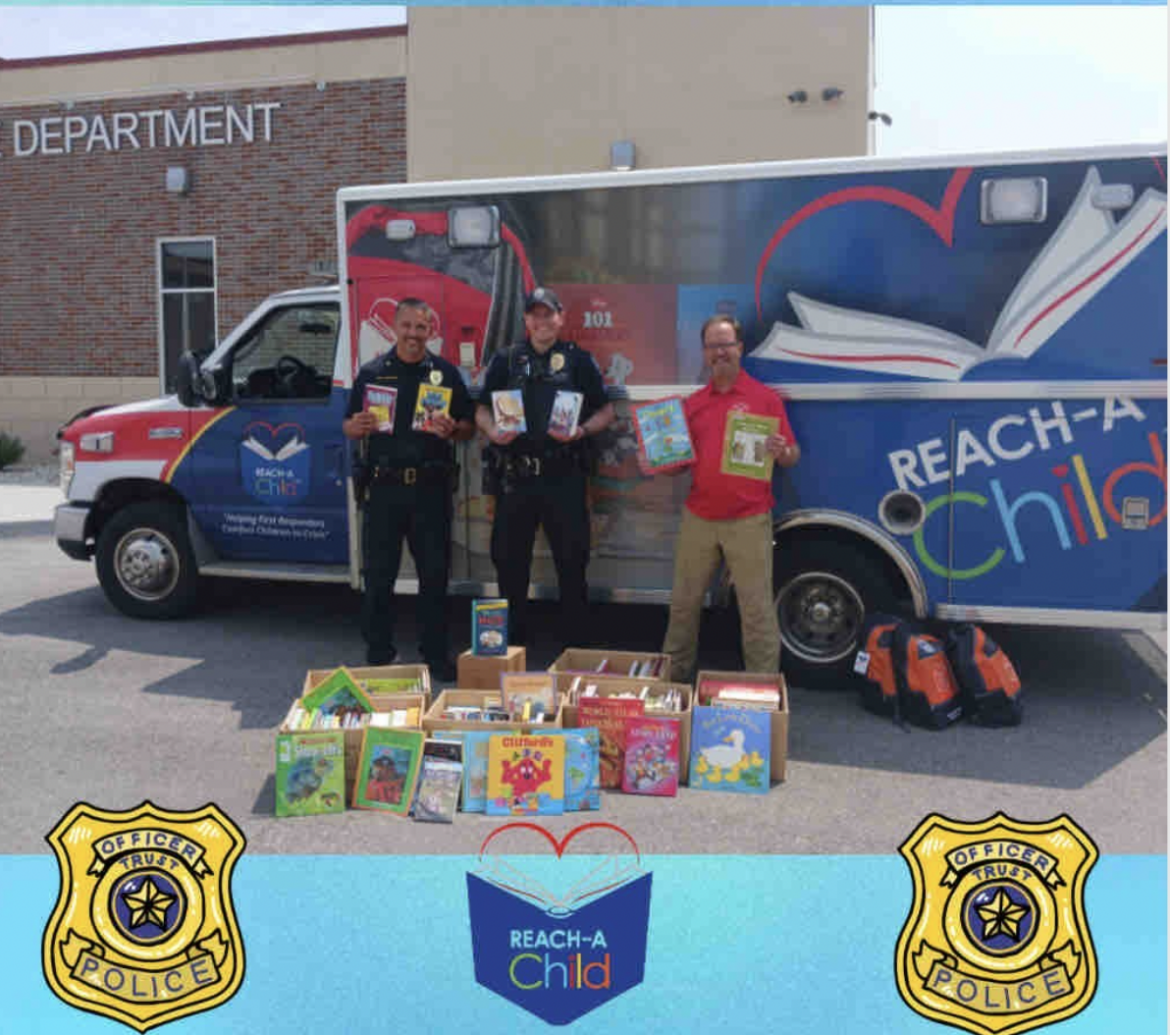A Q&A with Curtis Fuszard
For children facing hard times, having books to read can be a great source of comfort.
Curtis Fuszard is the executive director of the Madison-based REACH-A-Child program, which distributes books to children to help them cope with difficult situations. The program provides first responders — including police officers, firefighters and state patrol officers — with a REACH bag of children’s books to keep in their vehicles so they can distribute books to children in crisis situations, such as a house fire or a car accident. The goal is to let each child pick a book from the bag, then have the first responder read the book to the child to help distract or soothe them.
REACH-A-Child also helps first responders create strong relationships in the communities where they work. “First responders are working really hard to promote a positive image,” Fuszard said. “One of the ways that they do this is to take these backpacks and start giving out books even in non-emergency situations.” Children get to keep all the REACH books they receive.
How do you find these first responders who are willing to do this job?

About 300 public safety departments have our backpacks. For instance, the Dane County Sheriff, the Rock County Sheriff, the Iowa County Sheriff, and the City of Madison Police and Fire departments all participate in our program. One way they find out about us is that they talk amongst themselves. The police officer in Mukwonago may talk to the police chief in Sussex or Slinger. And those participating in our program really like it and encourage other first responders to reach out and get these backpacks for their vehicles.
Another way is that I make cold calls. I reach out and explain that I am with REACH-A-Child and this is what we do, and [then] I ask if they would like these free books and backpacks. The third way is I reach out to community foundations — such as the community foundation in Beloit, Janesville or Edgerton — and send them a note. I say “Hey, if you give me money for these books and backpacks, I will take these books and backpacks to your community.”
What do you think is the biggest challenge you are facing?
Our biggest obstacle is [that] a lot of people don’t know about us. Yes, 300 departments have our backpacks, but there are probably 2,000 departments in this state. [Many] first responders don’t know about us, [and] people in most communities don’t know about us. But once they learn about us or spend some time on our website, [they’re] like, “Wow, that’s pretty neat,” and then it’s, like, “Yeah, we would like that for our police officers or firefighters.”
What do you wish people in our community be aware of?
It would be nice if [more] community leaders could be aware of us as well. If they were aware, they would be motivated to raise money so that we could provide children’s books and backpacks to their first responders. I’m sorry to come back to the same issue, but awareness is absolutely the biggest challenge we have.
What have you done to make more people aware of your work?
One of our board members is close to an association called the Wisconsin Newspaper Association, [made up of] people [who] produce community newspapers. Thanks to this board member, I met the head of the Wisconsin Newspaper Association, and she said, “If you write an article about REACH-A-Child, and include some photographs, I will send it to all 220 community newspapers.” I thought, This is great. This is exactly what I need. It’s going across the state of Wisconsin. So, I did, and she did — and not a word. I don’t know how many of [the newspapers] actually published the content; maybe they just like things that are local. But this was an attempt to have these community newspapers highlight the fact that there is this organization that could bring children’s books to a police department. I forget the call to action, but [I got] zero response.
How do people in your program, like the first responders, give you hope?

First of all, I’ve been in this job for seven years, [and] the best part of the job is when the department says, “Sure, we’ve got 12 vehicles, could you bring 12 backpacks?” Get the car, drive to the community, deliver the 12 backpacks and watch as they put backpacks into each one of their vehicles. That is so exciting because you know that maybe even later that day, one of those first responders is going to engage with a child that has had a very bad day. They now have a tool to comfort that child, whereas a few hours before they didn’t have anything. That is extremely rewarding, the best part of the job.
Another really cool part of the job is that about half of these first responders are not parents and they don’t know what to do when a child is screaming. Well, now, even though they’ve never been a parent, they can say, “Hey, come with me, let’s go to the car, where we’ll open up the backpack and read a book together.” The first responders are, like, “It’s so great to have REACH-A-Child here, because kids love books, and they can take two, three, four books!” The first responders that use us love us. So that inspires me to get more departments to sign up for REACH-A-Child.
This interview has been edited and condensed for clarity.





